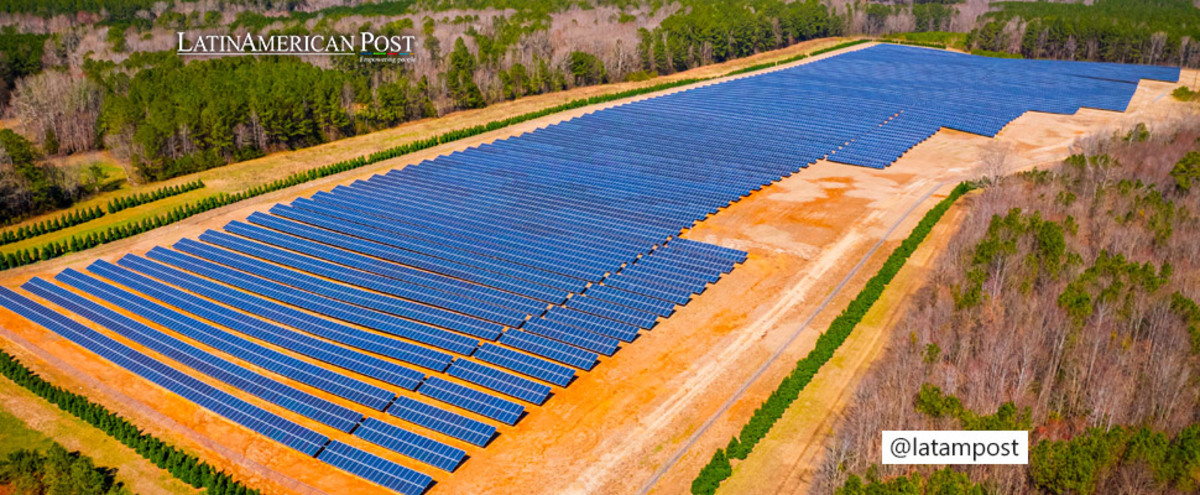Puerto Rico to Receive a $440 Million Solar Initiative for Low-Income Homes
In a significant shift towards sustainable energy, the U.S. Department of Energy has earmarked $440 million to install solar panels on up to 40,000 low-income homes in Puerto Rico. This initiative, a response to the territory's crumbling electric grid and chronic power outages, not only aims to enhance energy resilience but also positions Puerto Rico toward a greener future.

Photo: Pexels
The Latin American Post Staff
Escucha este artículo
Leer en español: Puerto Rico recibirá una iniciativa solar de $440 millones para hogares de bajos ingresos
Empowering Puerto Rico's Energy Future
The U.S. Department of Energy's recent announcement of a $440 million investment in solar energy installations for Puerto Rico's impoverished communities is pivotal in addressing immediate power reliability issues and long-term sustainability goals. This initiative, steered by Energy Secretary Jennifer Granholm, targets households frequently beset by power outages, especially those with residents dependent on uninterrupted power supply due to medical needs, such as dialysis patients.
A Two-Pronged Approach
The strategy involves a two-pronged approach: allocating $400 million to three solar companies and $40 million to five nonprofit organizations, addressing not only the installation of solar panels but also incorporating a broader perspective on community engagement and support. This move signifies more than just a transition to renewable energy; it embodies a fundamental shift in addressing systemic inequalities in energy access.
Puerto Rico's energy infrastructure has been precarious for years, plagued by neglect and exacerbated by devastating hurricanes Maria in 2017 and Fiona in the previous year. These natural disasters not only highlighted the frailty of the existing grid but also underscored the urgency for a more resilient and sustainable energy system. Granholm's impatience with the grid's current state reflects a broader recognition of the need for rapid, effective action.
A Leap Toward Renewable Energy Goals
Investing in solar energy is not just a response to the immediate crises stemming from inadequate infrastructure but also a visionary step toward Puerto Rico's broader environmental goals. Currently, the island relies heavily on petroleum for its energy needs, with a staggering 97% of electricity generated from this source. The local government's commitment to obtaining 40% of its power from renewable resources by 2025 and 60% by 2040 positions this initiative as a critical leap towards these targets.
The distribution of funds to both solar companies and nonprofits is a strategic decision that addresses multiple layers of the energy crisis. For-profit solar companies can ensure the rapid deployment and technical efficacy of the installations. In contrast, nonprofits can facilitate community engagement, ensuring that the projects not only meet technical parameters but also resonate with the local community's needs and values. This dual approach aims to ensure that the transition to solar energy is not just top-down but also grows organically within the community.
A Vision Beyond Puerto Rico
Furthermore, the significance of this initiative extends beyond Puerto Rico. The U.S. government's backing of such a large-scale renewable energy project in a territory often perceived as peripheral reflects a growing recognition of the importance of sustainable energy practices across all American territories and states. It sets a precedent for similar initiatives in other regions facing comparable challenges.
However, the success of this ambitious project hinges on various factors. The first is the speed and efficiency of the roll-out. The goal is to commence installations by early next year, which demands quick coordination among various stakeholders. Another critical factor is the reliability and durability of the solar installations themselves. In a region prone to hurricanes and extreme weather events, the resilience of these solar panels is paramount.
Also read: The Business Climate In Latin America Rises To Its Best Level In Two Years
Scaling for a Brighter Future
Lastly, there is the challenge of scalability and sustainability. While the project targets 40,000 homes, this number is a fraction of the island's total households. Ensuring that the initiative can be scaled up and that the benefits of renewable energy reach a broader demographic is crucial for its long-term success.
In conclusion, the U.S. Department of Energy's $440 million investment in Puerto Rico's solar infrastructure is a commendable step towards sustainable energy and resilience. It addresses immediate infrastructural needs while setting the stage for a greener, more equitable energy future. However, its effectiveness will ultimately depend on implementation speed, technological resilience, community engagement, and the ability to scale. This project could be a template for integrating renewable energy into regions with similar challenges, demonstrating a commitment to a more sustainable and inclusive energy future.




